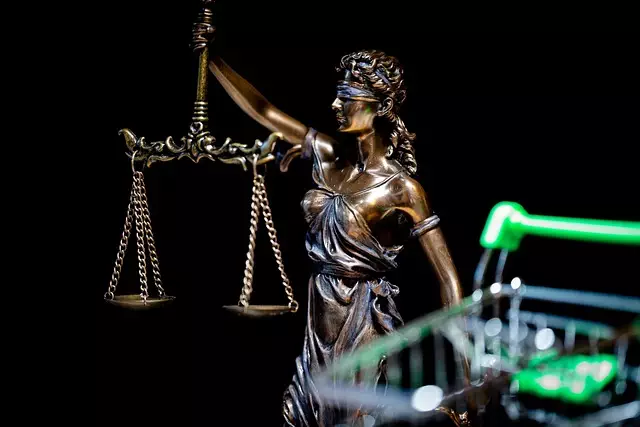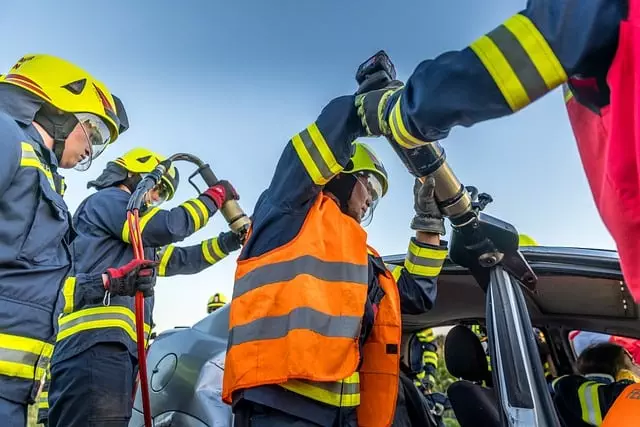Cyclists in The Bronx and Manhattan face unique challenges on construction sites. They have specific rights regarding lane usage and vehicle interactions within these zones, despite temporary traffic control measures. Staying alert and understanding their legal right to certain lanes helps prevent accidents, protecting both workers and cyclists in shared urban spaces. Key focus areas include worker safety and clear right-of-way rules for cyclists, emphasizing the importance of knowing one's rights in construction zones.
Construction site falls and injuries in The Bronx pose significant risks to cyclists, particularly with the increasing presence of construction activities near dense cyclist traffic. This article explores the complex interplay between cyclist right-of-way laws in Manhattan and the unique challenges faced by cyclists navigating construction zones in The Bronx. By analyzing statistical data on construction site accidents involving cyclists, we identify strategies to enhance safety for cyclists in urban construction environments, focusing on the legal framework and practical solutions.
- Construction Site Falls and Injuries in The Bronx: Understanding Cyclist Right of Way Concerns in Manhattan
- – 1.1 The Prevalence of Construction Sites and Cyclist Traffic in Manhattan and The Bronx
Construction Site Falls and Injuries in The Bronx: Understanding Cyclist Right of Way Concerns in Manhattan

Construction Site Falls and Injuries in The Bronx: Understanding Cyclist Right of Way Concerns in Manhattan
The Bronx, like Manhattan, is home to bustling construction sites, often presenting unique challenges for cyclists navigating these urban landscapes. With a focus on worker safety, it’s crucial to also consider the rights and risks of cyclists sharing these spaces. In New York City, cyclists have specific rights regarding vehicle interactions, especially concerning right of way. These rules are designed to protect both workers and riders, preventing accidents that can lead to serious injuries.
When construction sites are active, temporary traffic control measures often divert vehicles around the worksite, which can indirectly impact cyclist routes in Manhattan. Cyclists must be vigilant, staying alert for altered traffic patterns and construction-related signage. Understanding their right of way is essential; cyclists typically have the right to travel through a lane even if it’s marked as a vehicle turn-only or construction zone, provided they do not interfere with traffic flow or construction activities.
– 1.1 The Prevalence of Construction Sites and Cyclist Traffic in Manhattan and The Bronx

Construction sites are a common sight in Manhattan and The Bronx, two boroughs of New York City known for their bustling construction industry. With an abundance of high-rise buildings, infrastructure projects, and ever-growing urban landscapes, these areas often host numerous active construction sites simultaneously. This dense concentration of construction activity naturally brings them into close proximity with cyclist traffic, as both seek to navigate the city’s busy streets.
In Manhattan and The Bronx, cyclists are granted the right of way in many instances, emphasizing the need for heightened awareness among drivers, construction workers, and fellow cyclists. The Cyclist Right of Way regulations aim to ensure safer interactions between these user groups, particularly at construction sites where vehicles and workers may be present on roads or near work zones. Understanding and adhering to these rules are vital steps toward reducing accidents and injuries involving cyclists in areas with high construction activity, such as the vibrant urban centers of Manhattan and The Bronx.
Construction sites are inevitable in both Manhattan and The Bronx, but their presence raises concerns about cyclist right of way. Understanding and adhering to traffic regulations is crucial to ensuring safety for all road users, especially cyclists navigating these urban landscapes. By promoting awareness and implementing effective measures, we can foster a safer environment for cyclists in Manhattan and beyond.
